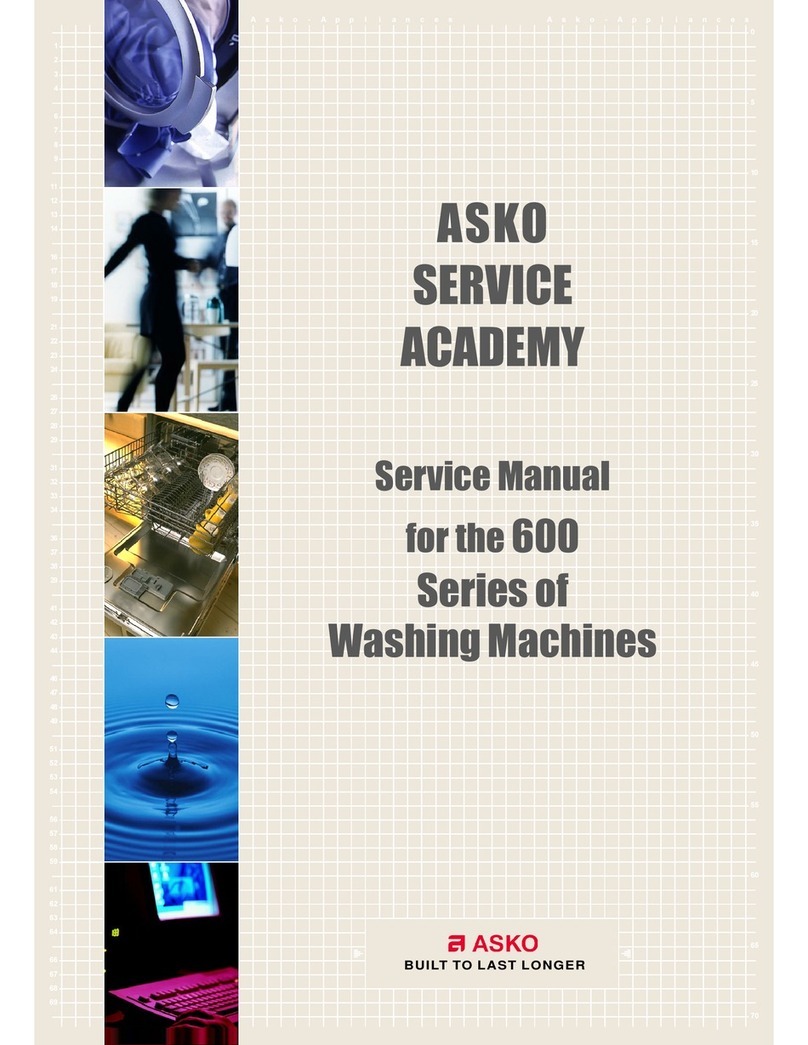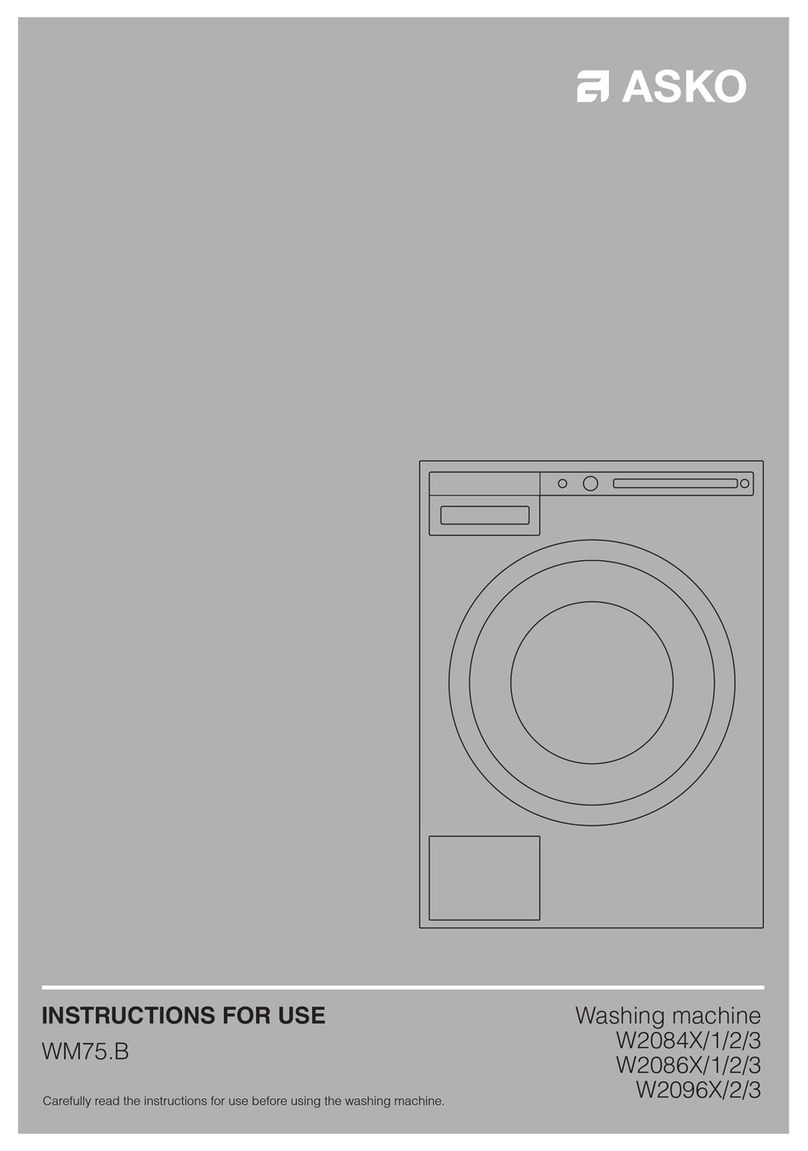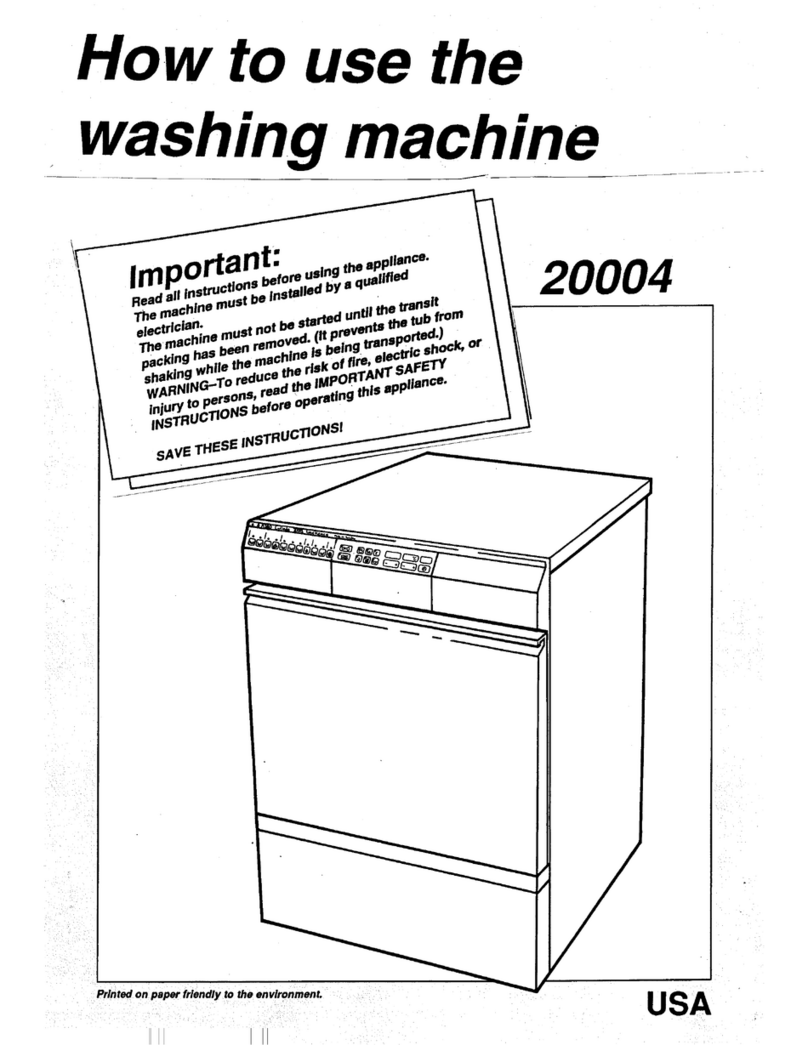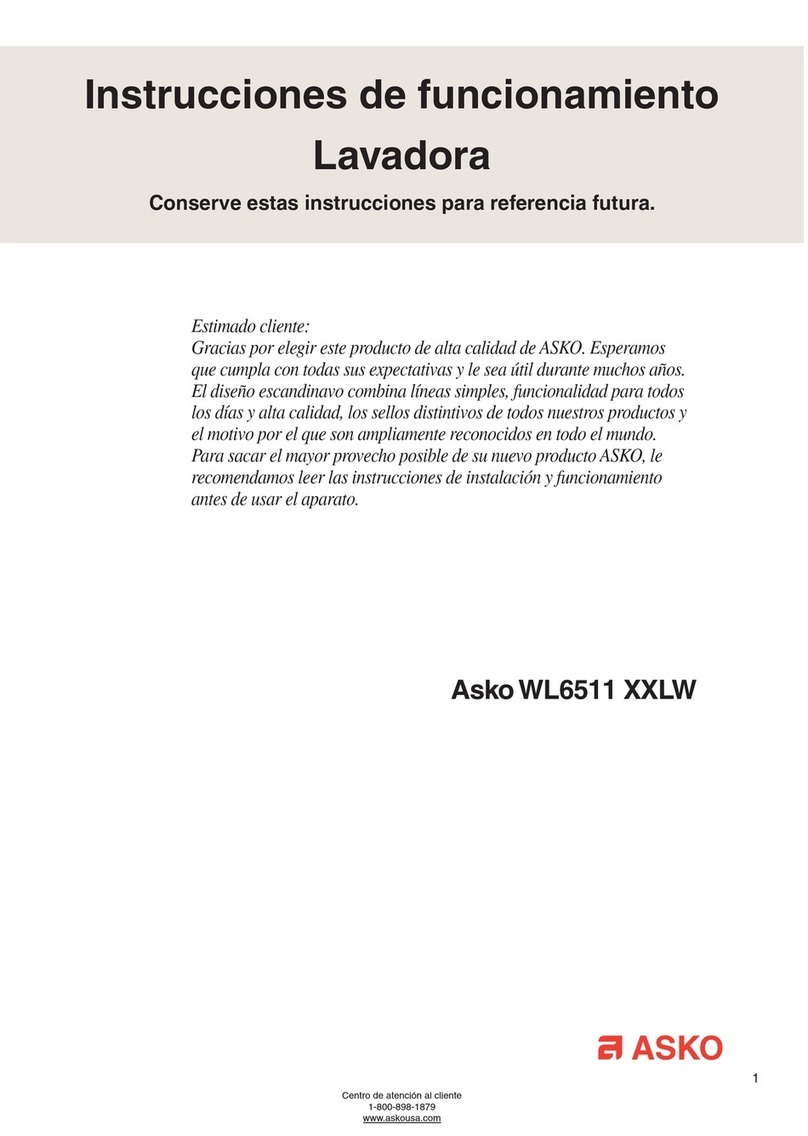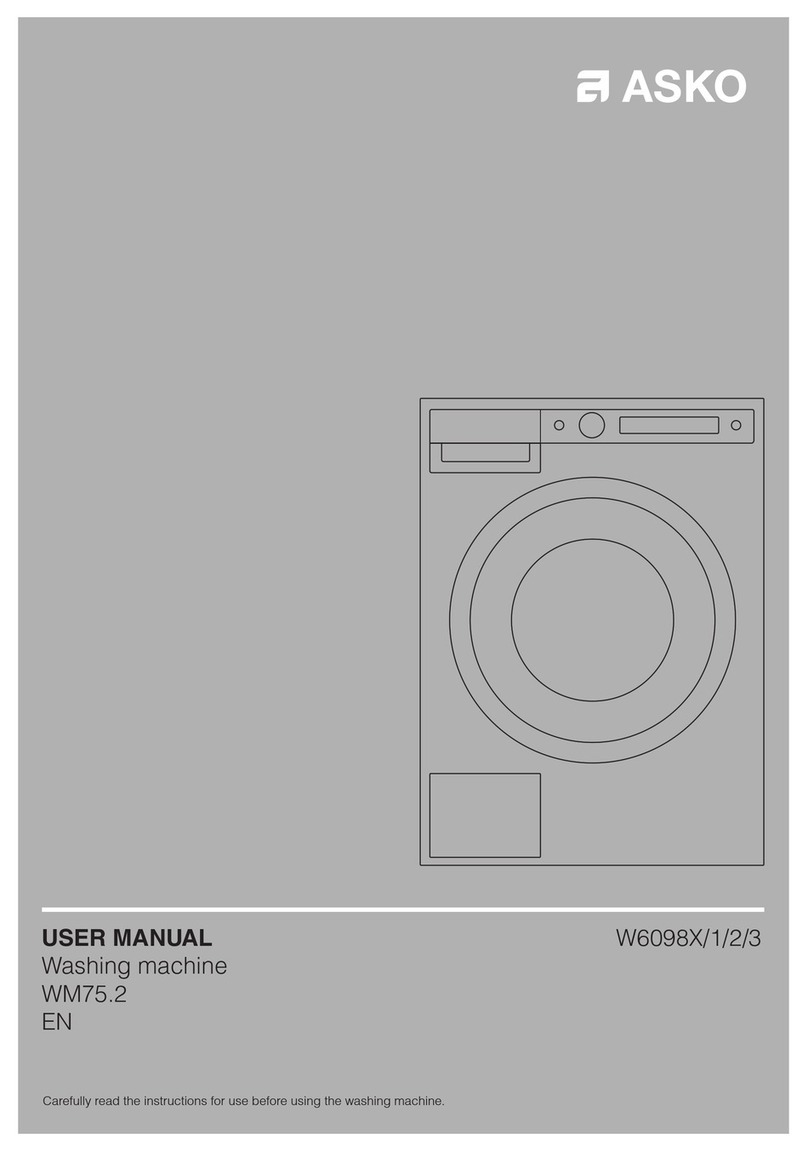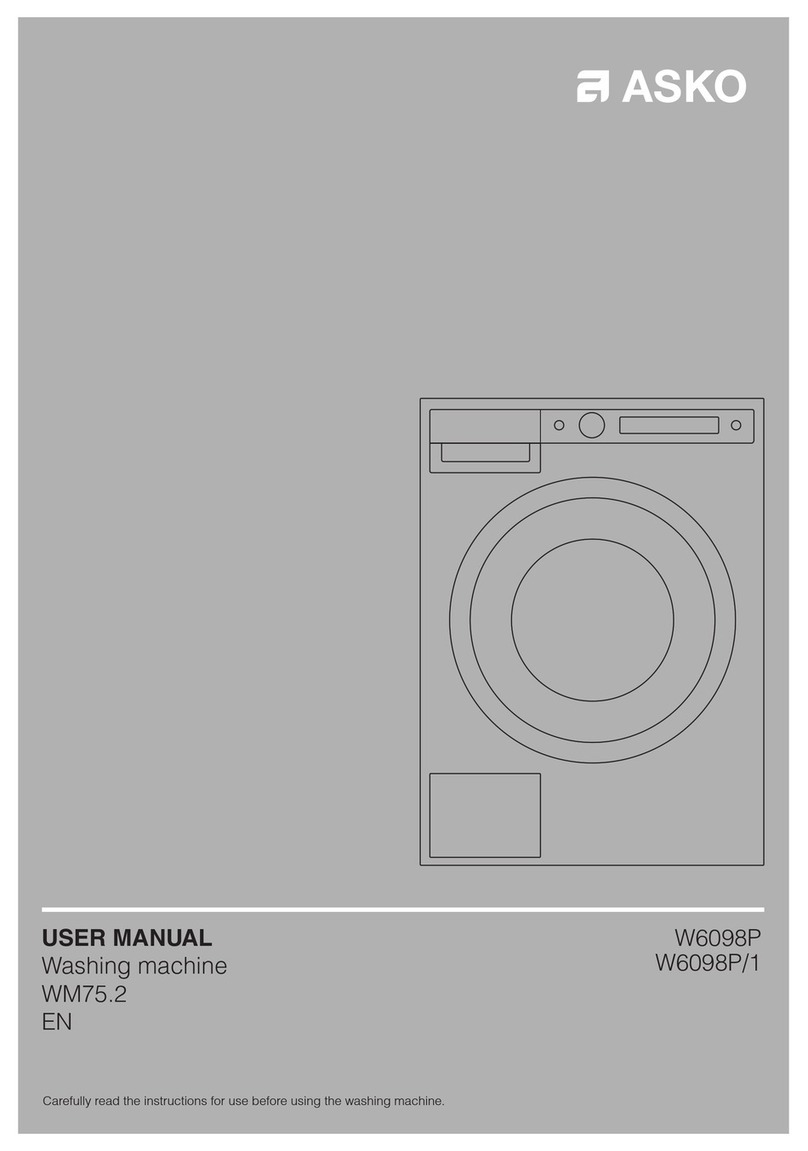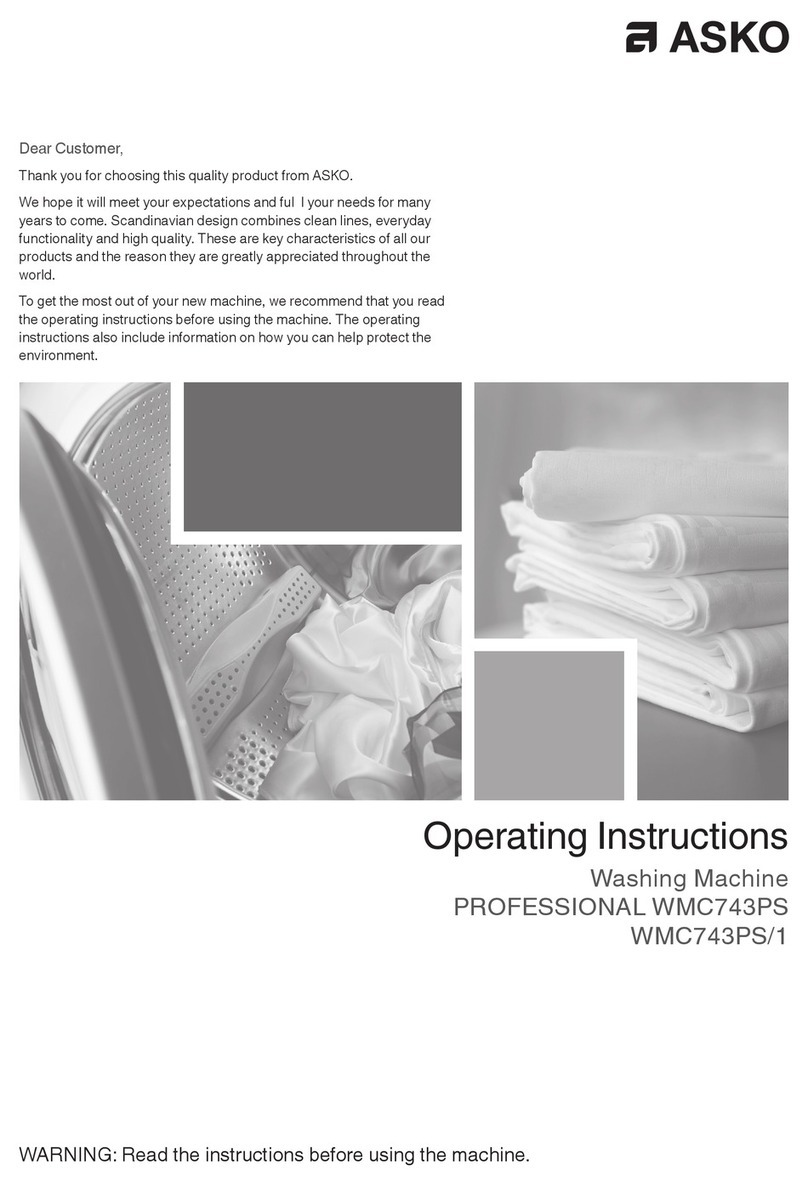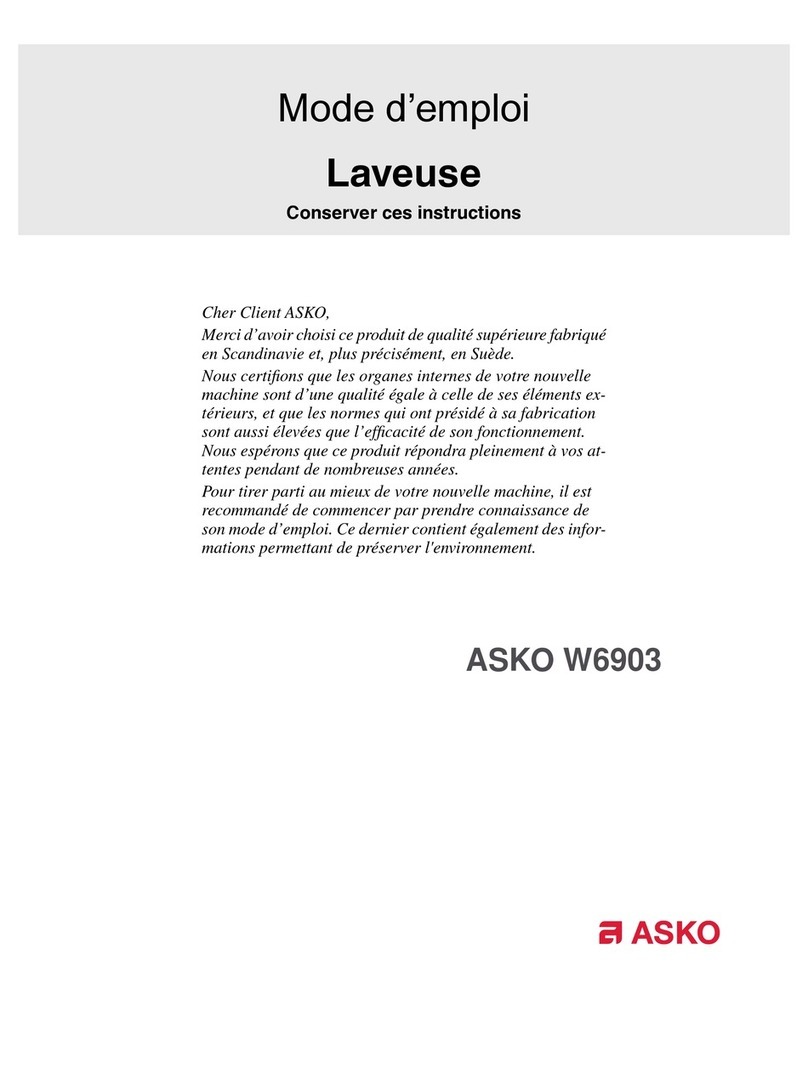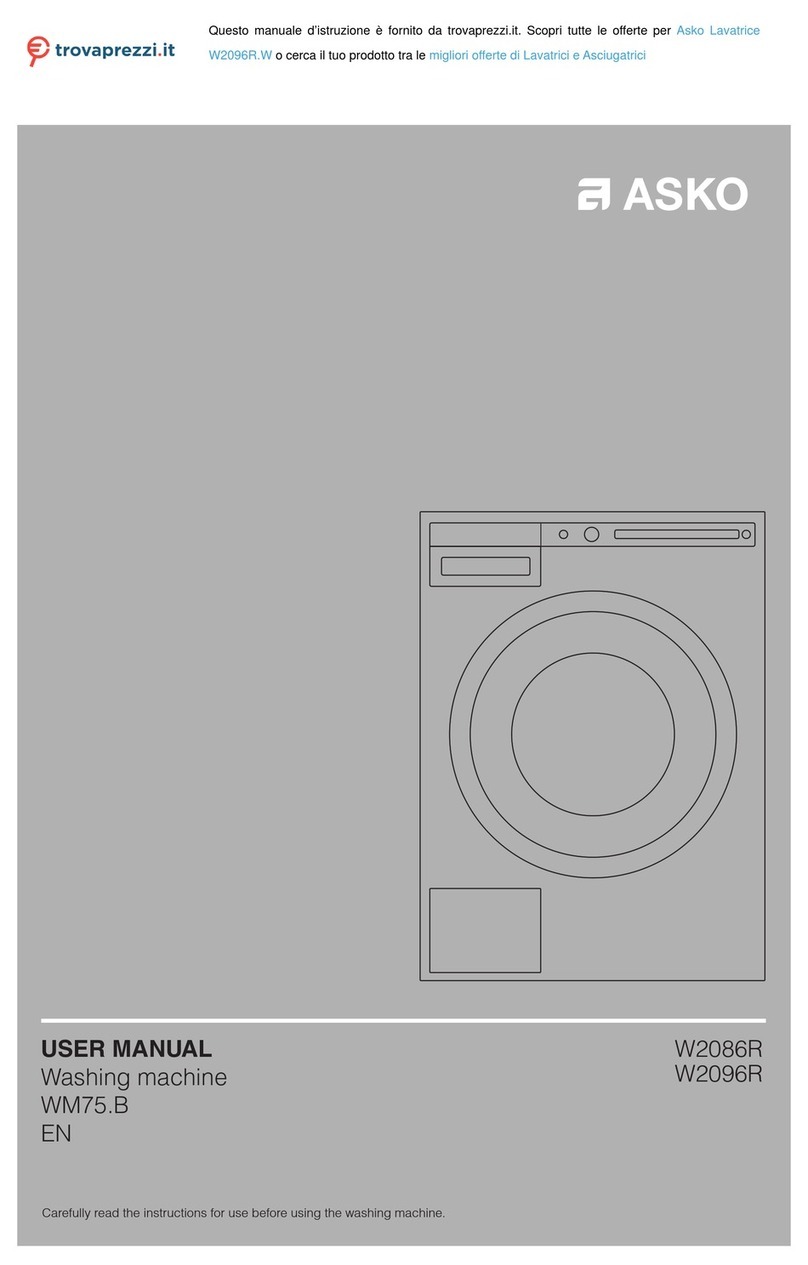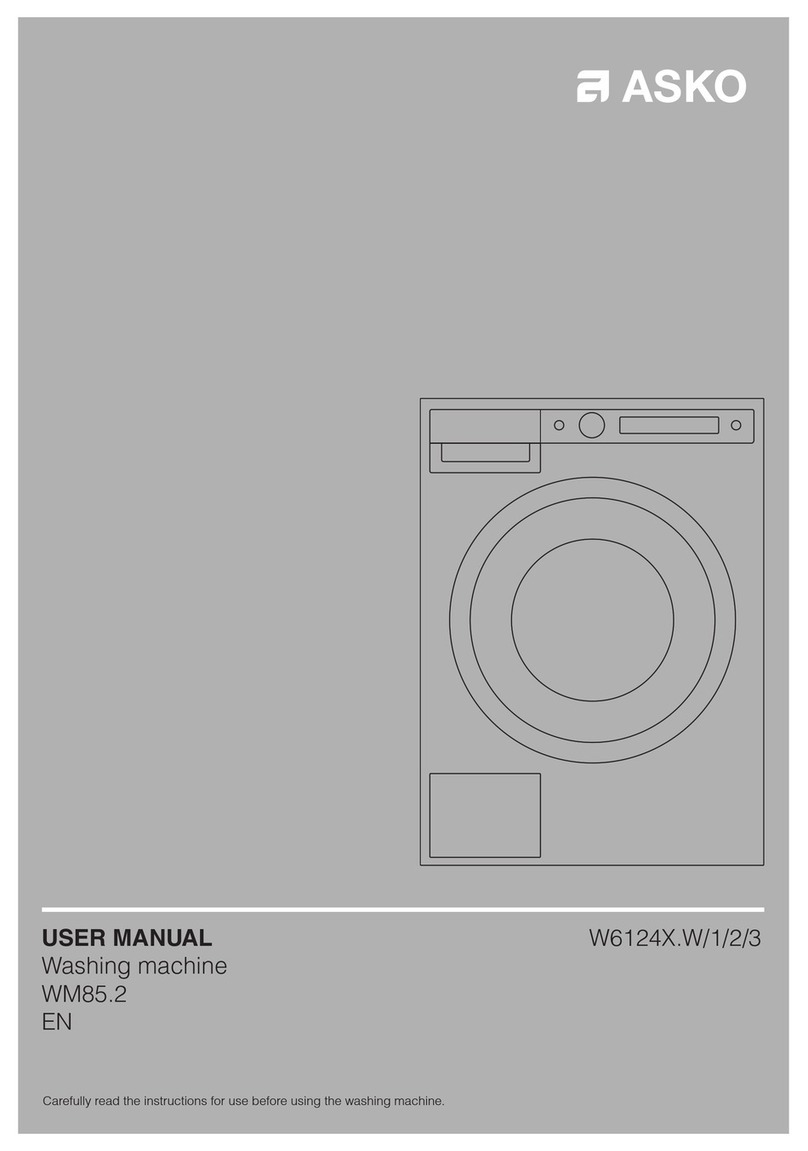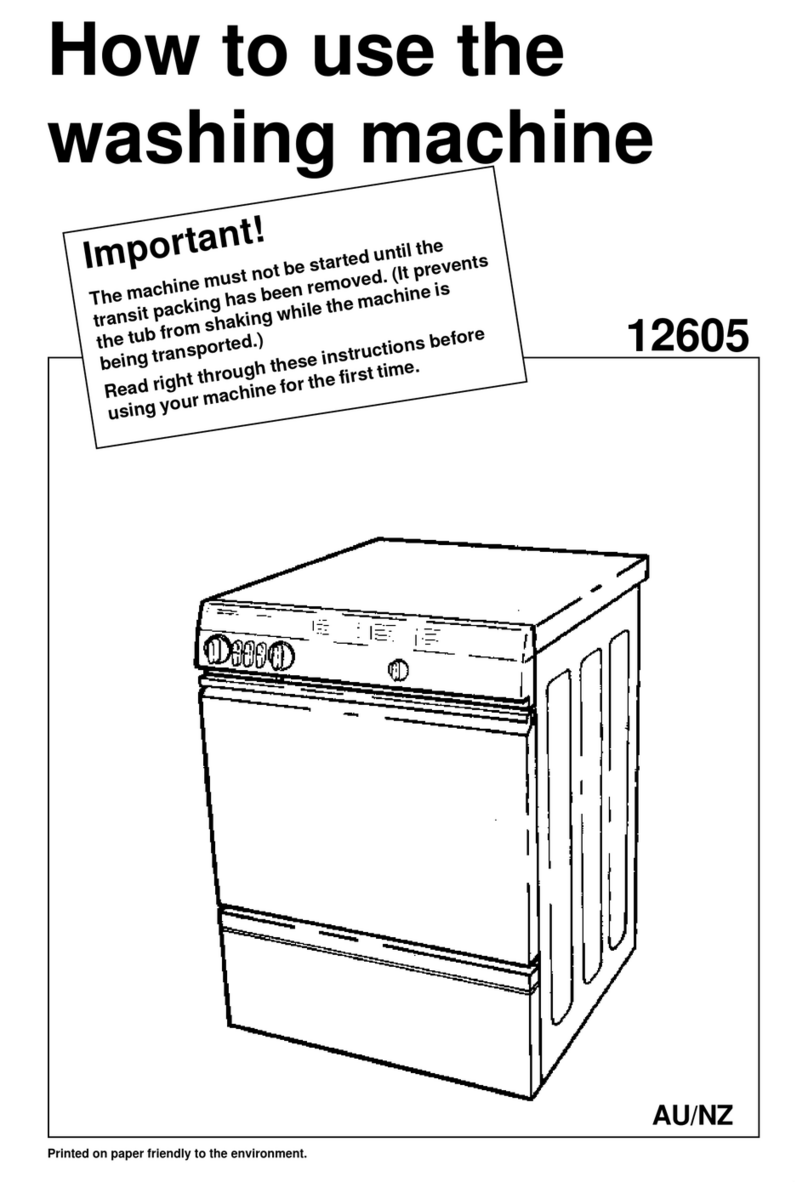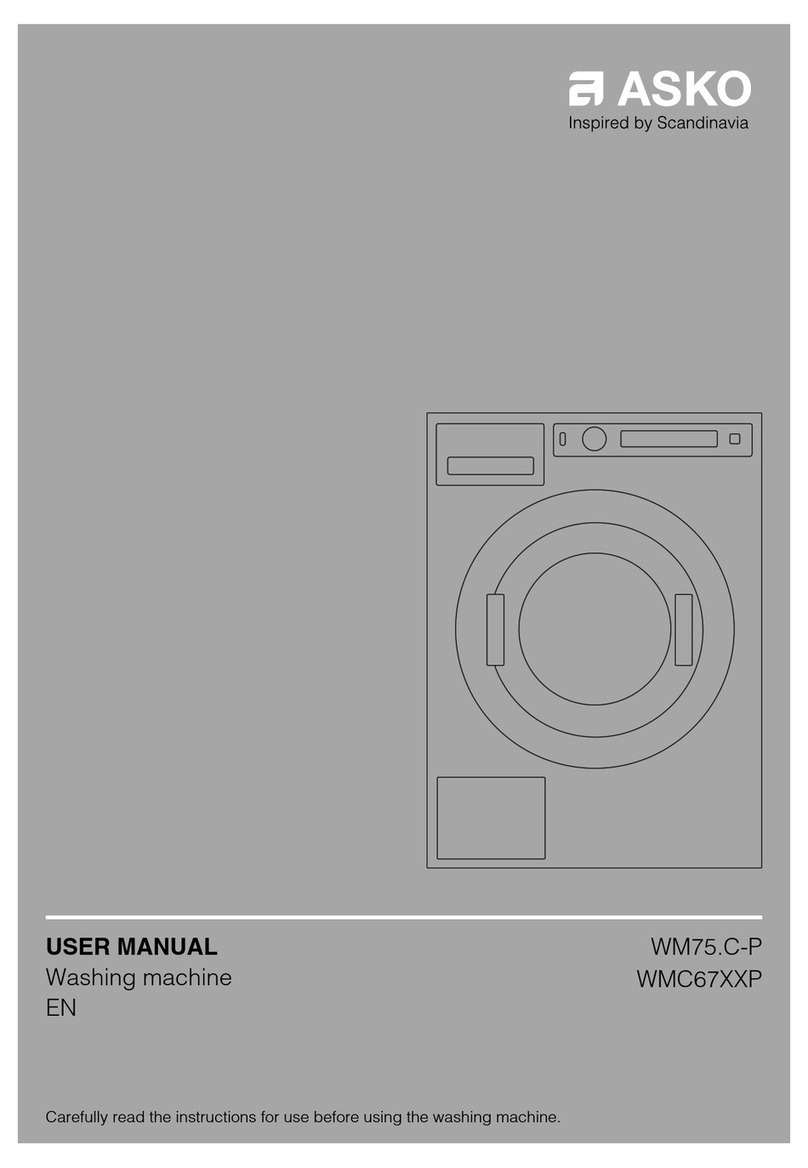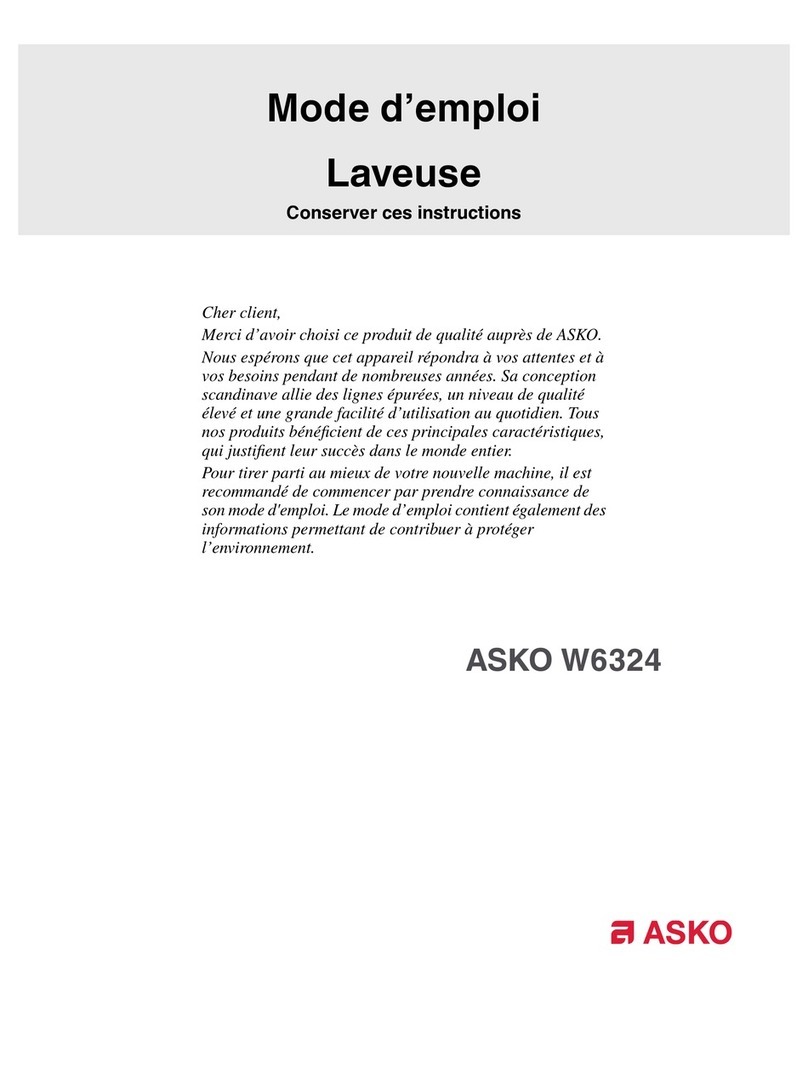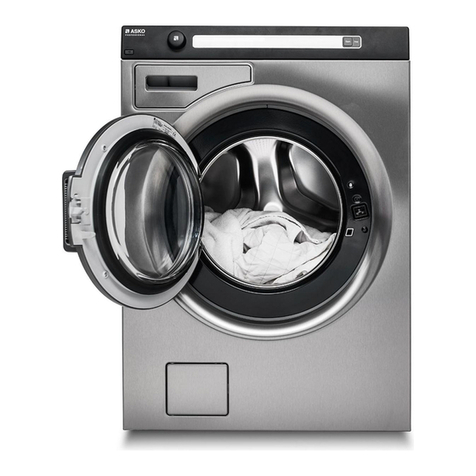10
FAULT TRACING
The machine will not start.The machine will not start.
The machine will not start.The machine will not start.
The machine will not start.
1. Checkthehousebreakerswitch/fuses.
2. Checkthattheglass dooris closedsecurely.
3. Make sure the power switch is turned on and
theindicator lamp islit.
4. Ifthepowerswitchisonandtheindicatorlamp
is not lit, there is no power supply. Make sure
themachineisproperlypluggedintotheelectrical
outlet at the wall or on the back of the dryer.
5. If washer power cord is plugged into the back
ofthedryer,turnthepowertothedryeronand
see if the indicator light is lit. If it is not lit,
unplug the dryer power cord and replace it
firmlyinto thewall receptacle.
6. W620: Check that the Delay Start button is
notpressedin.
W640 and W660: Check that the Delay Start
symbol ( ) is not shown on the display.
The machine will not work.The machine will not work.
The machine will not work.The machine will not work.
The machine will not work.
1. Checkthe main powerswitch.
2. Checkthe door switch.
3. Measure the voltage between PF1 and PF3
(W600/W620) also between E1-1 and E1-2
(W640/W660).The value should be the same
asthemainpowersupplyvoltage(208–230V).
(Seepage 13 for values.)
4. Check the machine and house fuses. If it’s
necessary to change the fuses, investigate why
they have blown.
The washer door is difficult to close orThe washer door is difficult to close or
The washer door is difficult to close orThe washer door is difficult to close or
The washer door is difficult to close or
will not close.will not close.
will not close.will not close.
will not close.
1. Make sure nothing is caught in the door, such
asapronstrings,shoelaces,etc.
2. Make sure the power to the machine is on.
3. Checkthat the doorseal fits securely.
4. Checkthe door switch. (Seepage 14.)
The washer door leaks.The washer door leaks.
The washer door leaks.The washer door leaks.
The washer door leaks.
1. Check that the door seal is in good condition
andfitssecurely.
2. Make sure nothing is caught in the door, such
asapronstrings,shoelaces,etc.
The washer door will not open.The washer door will not open.
The washer door will not open.The washer door will not open.
The washer door will not open.
1. Make sure the power to the machine is on.
2. Be sure the washer is not still in a cycle.
3. W600/W620:MakesuretheProgramControl
knob is in the proper position (at a red mark).
4. MakesuretheDoorOpenbuttonwaspressed.
5. Checkthemachineandhousefuses.
6. Check the door lock. (See page 14.)
7. Ifthereisnowaterinthemachineandthedoor
won’t open in the normal manner, you should
be able to open it manually, as follows:
a. Make sure the power is turned off.
b. Usingaflatheadscrewdriver,gentlypryopen
thedrain pumpcover.
c. Empty out any water that may be in the
machine by disconnecting the drain hose
from the door pin (A).
IMPORTIMPORT
IMPORTIMPORT
IMPORTANTANT
ANTANT
ANT
If there is still water in the drum, make sure you
have a large container ready to catch the water.
d. Unscrew the emergency
door opener handle (B)
andpullitout(C)toopen
thedoor.
e. Replace the emergency
dooropenerhandle.
TT
TT
Temperature and speed cannot be select-emperature and speed cannot be select-
emperature and speed cannot be select-emperature and speed cannot be select-
emperature and speed cannot be select-
ed (W600 and W620).ed (W600 and W620).
ed (W600 and W620).ed (W600 and W620).
ed (W600 and W620).
1. Check the selector knobs. (See the schematic
diagramstofindthemeasuringpoints.)
The machine does not perform washingThe machine does not perform washing
The machine does not perform washingThe machine does not perform washing
The machine does not perform washing
rotation or does not reverse the direc-rotation or does not reverse the direc-
rotation or does not reverse the direc-rotation or does not reverse the direc-
rotation or does not reverse the direc-
tion of washing rotation.tion of washing rotation.
tion of washing rotation.tion of washing rotation.
tion of washing rotation.
1. Checkthat thedrivebelt issecure.
2. Check the programmer (W600/W620) or the
motor control board (W640/W660). (See the
schematicdiagramsformeasuringpoints.)
3. Check the motor. (See page 13.)
4. Checkthe levelswitch. (See page13.)
The washer doesn’t spin dry (W640/W660).The washer doesn’t spin dry (W640/W660).
The washer doesn’t spin dry (W640/W660).The washer doesn’t spin dry (W640/W660).
The washer doesn’t spin dry (W640/W660).
If “0000”is flashing in the top right corner of the
display,themachinedidnotspin.Themachinehas
abuilt-inout-of-balancesensorthatwillreducethe
spin drying speed or stop spin drying altogether if
theloadis toounbalanced.
1. Openthewasherandredistributethelaundry.
2. RunaSpinprogramtocheckthattheproblem
hasbeensolved.
A B
C
